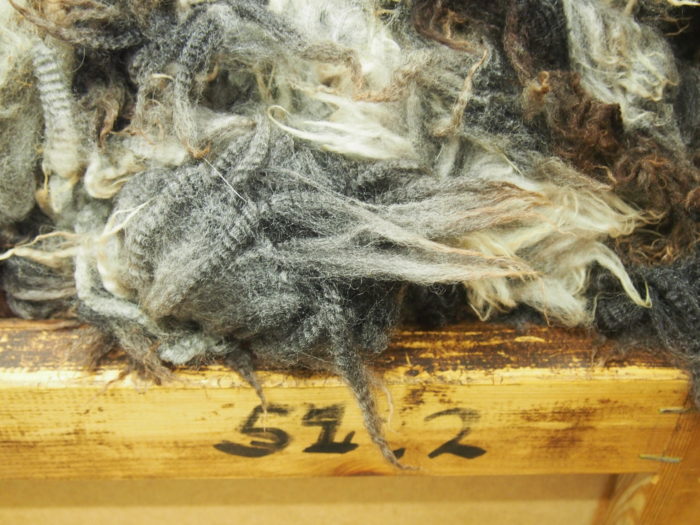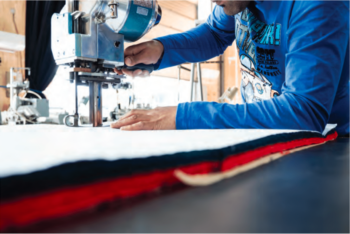The First Wool Project

“Valuing Norwegian Wool” started in March 2010, and its goal was to look at the whole lifecycle of wool, finding new and innovative approaches to bringing wool to the forefront in textiles again. Wool has been the central textile fibre in Norwegian (and Nordic) history and is still economically important to Norwegian farmers, textile manufacturing, retailing and the garment/fashion industry.
Norwegian wool has a strong cultural impact; the Norwegian traditional dress is made from it, and decorated with wool embroidery. Maintained by a vital handicraft and knitting tradition in the population, Norwegian knitwear is regarded as an important representation of national identity – knitwear being the main Norwegian souvenir exposing traditional patterns. Well-established Norwegian brands in manufacturing industries, such as Dale of Norway, Hillesvåg and Rauma all sprung out of a local, regional or national supply chain of wool.
There have, however, been serious challenges to the Norwegian wool production value chain. The world market prices have plunged over many years for cross-bred wool. The domestic wool production level has however remained the same, partly a result of subsides and support programmes at the farm level. Due to lack of data, the total income at the farm level from wool production is difficult to stipulate. Yet, the share of income among farmers stemming from wool production has been shrinking, down from 23 % to 18 % (Animalia 2009), although the proportional reduction can be explained to some extent by an increase in meat prices. Norwegian textile and garment industries have used less than 30 per cent of their wool input from Norwegian producers, and there is a concern that the industry will favour quality standards that Norwegian producers currently are unable to meet. Norwegian wool production is also challenged by a consumer demand for thinner and softer machine-washable wool – wool types not produced in Norway.
Still, there is great potential in exploiting the value of Norwegian wool. The environmental backdrop of the project is the unquestionable fact that wool as a material has considerable environmental benefits compared to other fibres. In addition, there are reasons to believe that Norwegian wool production has environmental benefits compared to imported wool.
Documentation of environmental benefits also seems to be valued among both industrial customers and consumers. The advantages of Norwegian wool have been hard to document.
The wool industry at a global level has met the challenge from synthetic fibres by f. ex. turning to clothes that are more adapted to everyday life – such as sports and outdoor life. There is, however, a lack of knowledge on new ways of utilising the coarser wool among both producers and consumers, and how existing Norwegian qualities can or should meet quality expectations and competition. Research on wool textiles and new concepts for product development are therefore necessary.
The project was led by The Consumer Institute SIFO, by Dr. Ingun Grimstad Klepp. The Nordic Fashion Association was one of several partners in the project.


